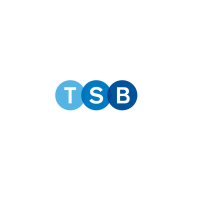
At least, that’s one way of looking it. A cynic might point out the TSB branches are rebranded Lloyds branches which spectacularly failed to be bought by the Co-op last spring.
Either way, TSB launched last week and plans to start lending through intermediaries in 2014. So how can the latest addition to the high street come out from the shadows of Lloyds and stand out in the mortgage market?
For this week’s Marketwatch, our commentators are:
TenetLime managing director Gemma Harle, who says TSB needs to streamline intermediary and direct distribution
Valunation managing director Alison Beech, who calls on the new bank to think creatively about the mortgage life cycle
Springtide Capital managing director Henry Knight, who says TSB could combine high street clout with manual underwriting
Gemma Harle, managing director, TenetLime
 TSB’s return to the intermediary sector next year is a very welcome one. Their re-entry will surely be made easier thanks to their strong – albeit slightly pedestrian – brand presence.
TSB’s return to the intermediary sector next year is a very welcome one. Their re-entry will surely be made easier thanks to their strong – albeit slightly pedestrian – brand presence.
They will also benefit from the advantage of starting with a relatively clean sheet. This may encourage TSB to be more creative with their product design, while at the same time not jeopardising the quality of their offering.
Their main priority ought to be to differentiate themselves from Lloyds. But to do so they need to decide exactly what business they are targeting. It’s an excellent opportunity to create products to fill gaps in the market and consider some of the current issues – such as lending into retirement and interest-only.
However, they will need to be mindful that first impressions count. What they do now will have a direct effect on how brokers will respond. Fundamental to their success will be getting their direct and intermediary distribution streams to dovetail together.
In light of Mortgage Market Review stipulations on affordability and the requirement for transparency, they will also need to update their IT. Simply lifting it from their direct-to-consumer operation is not an option.
Overall, it will be a beneficial move for the sector. TSB are recognised as a strong name with the end consumer and that will surely work to their advantage.
Alison Beech, managing director, Valunation
 TSB’s arrival is welcome. It has heritage without baggage. It seems clear that it will be initially indistinguishable from HBOS in terms of mortgage products, but its plans to launch into the intermediary space in 2014 suggests it then may have an opportunity to shape products suited to that market.
TSB’s arrival is welcome. It has heritage without baggage. It seems clear that it will be initially indistinguishable from HBOS in terms of mortgage products, but its plans to launch into the intermediary space in 2014 suggests it then may have an opportunity to shape products suited to that market.
Whether we will see any real process or product innovation is debatable given the bank’s provenance and current reliance, as I understand it, on legacy platforms. Although much is being made (by them) of their presence as a ‘local’ bank, staff at branches will not be able to over-ride centralised and automated decision making.
The point at which the mortgage valuation is instructed varies by lender. Instruct too early and you run the risk of aborted appointments and reports clogging up the system, wasting time and money. Instructing too late may delay the underwriting process, particularly now there is such pressure on valuer capacity. As a new entity TSB may take the opportunity to unpick the mortgage life cycle and rebuild the processes to optimise the transaction flow.
With regard to product offering, a healthy interest in first time buyers, new build, BTL, and sensible treatment of first and second time movers with equity issues will ensure they gain quick traction with the intermediary market in 2014.
Henry Knight, managing director, Springtide Capital
 We think the best way for TSB to differentiate themselves would be to adopt a more manually based underwriting approach as opposed to the computer driven results favoured by the percentage of the larger high street lenders.
We think the best way for TSB to differentiate themselves would be to adopt a more manually based underwriting approach as opposed to the computer driven results favoured by the percentage of the larger high street lenders.
This would deliver a more bespoke approach to lending which would take into account whether or not the borrower has a sufficient level of income to cover the repayments. The ‘computer says no’ approach to lending is not flexible enough to cater for the circumstances of many potential borrowers and does not always provide an accurate picture of the client’s affordability and repayment strategy.
We would urge TSB to follow the example of smaller lenders such as Clydesdale, Kent Reliance and many smaller building societies. These use manual systems to assess client affordability on an individual basis, which delivers a more bespoke product and level of service.
With regards to product opportunities there are still gaps in the buy-to-let market, particularly at the 75% loan-to-value banding, as well as significant opportunities to develop a better underwritten interest-only policy, which relies more on individual underwriting than a list of pre-approved criteria.

















